
There’s an undeniable magic to classic cars, particularly the roaring muscle machines that defined an era of raw power and unbridled style. While certain legends like the Pontiac GTO command immediate recognition and awe, the true enthusiast knows that some of the most captivating stories lie in the lesser-known, often forgotten gems. These are the vehicles that, through clever engineering or strategic marketing, offered incredible performance in unassuming packages, becoming ‘holy grails’ for those who cherish automotive heritage.
Pontiac, in particular, was a brand celebrated for its ingenuity and a bold willingness to push boundaries, often delivering high-octane thrills in ways that sidestepped the typical expectations of the market. From groundbreaking compacts to dominant muscle cars, their journey is a testament to the passion and engineering prowess that shaped American automotive history. They understood that not everyone could afford the top-tier, high-profile machines, yet still yearned for speed and a distinctive driving experience.
Join us on a narrative-driven journey as we uncover the fascinating lineage of Pontiac’s innovative spirit, tracing its path from revolutionary compact car designs to the thunderous reign of the GTO. We’ll explore the key figures and technological marvels that paved the way for these incredible vehicles, culminating in the foundational elements that made cars like the GT-37 possible—a true secret weapon from Pontiac’s heyday.

1. **The Birth of the Original Pontiac Tempest: Innovation in a Compact Package**The story of Pontiac’s unique approach to performance begins earlier than many might expect, back in 1960. This was a time when downsizing was in vogue across the automotive landscape, and manufacturers were scrambling to meet a fresh market demand for smaller, more manageable vehicles. Automakers like Chevrolet with its Corvair, Ford with its Falcon, Plymouth with the Valiant, and Volkswagen with its iconic Beetle were all making significant inroads into the compact car segment.
Pontiac, witnessing this shift and the success of its competitors, was eager to claim its piece of the compact car pie. Crucially, General Motors of that era allowed its brands far more autonomy than in later decades. This meant that while a modern automaker might simply rebadge an existing car to save cash, Pontiac had the engineering muscle and corporate power to design and create its very own distinct compact offering.
This commitment to uniqueness manifested in a vehicle riding on the Y-body platform. While Pontiac’s new car would share unibody bones with its platform mates, the Buick Special and Oldsmobile Cutlass, the Pontiac variant was engineered to be profoundly different. Its platform mates utilized traditional front engines with transmissions hanging off the back. However, Pontiac’s creation, the Tempest, embarked on a different and truly innovative path.
Car Model Information: 1963 Pontiac Tempest
Name: Pontiac Tempest
Caption: 1967 Pontiac Tempest
Manufacturer: Pontiac (automobile)
Assembly: Pontiac Assembly,Pontiac, Michigan
Production: 1960–1970,1987–1991
Successor: Pontiac LeMans
Categories: 1960s cars, 1970s cars, 1980s cars, 1990s cars, All Wikipedia articles written in American English
Summary: The Pontiac Tempest is an automobile that was produced by Pontiac from 1960 to 1970, and again from 1987 to 1991.
The Tempest was introduced as an entry-level compact in October 1960 at the Paris Auto Show for the 1961 model year. Built on GM’s first unibody chassis, its new Y-platform was shared with the Buick Special/Skylark and Oldsmobile F-85/Cutlass.
While the Buick and Olds versions used a conventional drivetrain, the Pontiac had a unique, innovative design. The Tempest featured a front-engine/rear-transaxle layout that very nearly resulted in an ideal 50/50 weight distribution, together with independent rear suspension for nimble handling (a swing axle design similar to the Chevy Corvair). A Slant-4 engine connected to the 2-speed automatic transaxle via a flexible “rope” drive shaft. This configuration eliminated the driveshaft hump, yielding a flat floor with increased interior space. The Pontiac “Trophy-4” was also unique, created by basically halving a standard Pontiac V8 block.
Buick’s aluminum 215 V8 was also optional in 1961 and 1962, but very few Tempests were so equipped. The Tempest line offered an optional LeMans trim upgrade.
In 1964 the Tempest was redesigned as a mid-size car on the updated GM A-body platform, which used a conventional drivetrain. The base Tempest, Tempest Custom, and Lemans became separate trim packages, with an optional GTO performance option available on the LeMans for 1964 and 1965. The GTO was offered as a separate model line beginning in 1966. The Tempest name was retired after 1970, replaced by the T-37 as the base model, which in turn gave way to the LeMans name in 1972.
In Canada from 1987 to 1991, Pontiac marketed a rebadged version of the compact L-body Chevrolet Corsica under the revived Tempest name.
Get more information about: Pontiac Tempest
Buying a high-performing used car >>>
Brand: Pontiac Model: Tempest
Price: $10,750 Mileage: 0 mi.
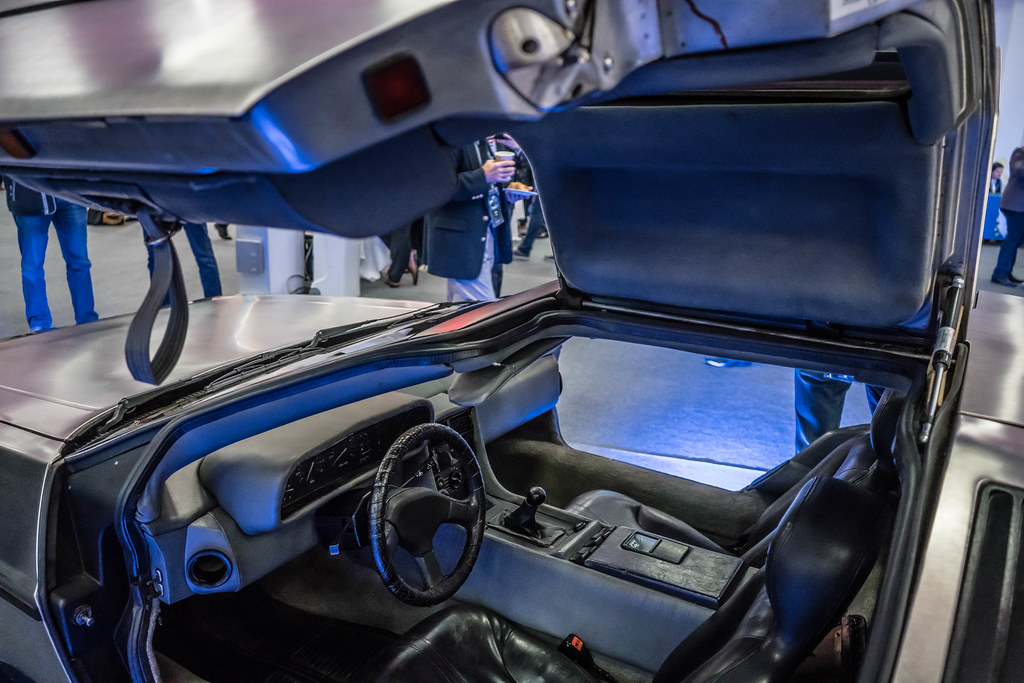
2. **John DeLorean: The Visionary Engineer Behind Pontiac’s Golden Age**The innovative spirit that defined Pontiac during this period was significantly shaped by the contributions of one legendary figure: John DeLorean. Joining Pontiac in 1956, DeLorean was a crucial part of an engineering team that included chief engineer Pete Estes, all working under the guidance of general manager Semon “Bunkie” Knudsen. His arrival marked the beginning of a vibrant era of invention and groundbreaking design for the brand.
DeLorean wasted no time bringing his inventive mind to the forefront, spearheading developments that would solidify Pontiac’s reputation for engineering excellence. His impact was swift and profound, laying the groundwork for many of the brand’s most celebrated achievements. He was not just an engineer; he was a visionary who understood how to imbue cars with character and excitement.
His rapid ascent within General Motors speaks volumes about his influence and talent. By 1961, DeLorean became Pontiac’s chief engineer, and just four years later, in 1965, he achieved the remarkable distinction of becoming the youngest person ever to head a division at General Motors. This meteoric rise highlights his integral role in transforming Pontiac into the “fun, high-octane thrill division” of GM, a legacy that continued even when the corporation faced broader sales struggles.
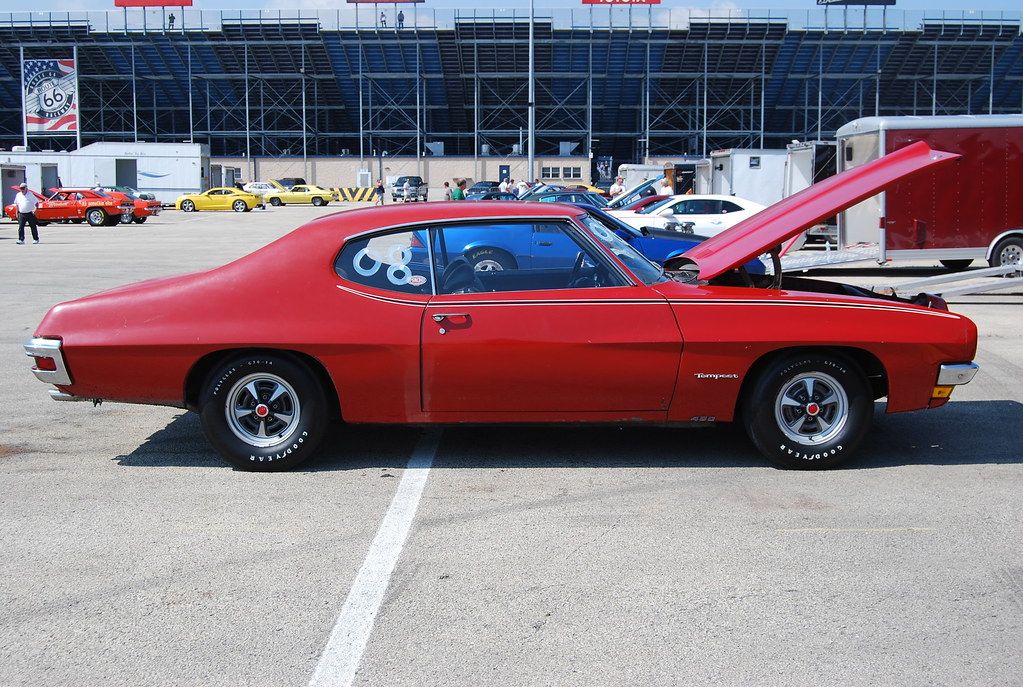
3. **The “Rope Drive” and Transaxle: Pontiac’s Groundbreaking Drivetrain Technology**One of the most radical and inventive engineering feats attributed to DeLorean and the Pontiac team was the development of a rear-swing-axle four-wheel independent suspension system, paired with a revolutionary transaxle design. This technology, originally slated for 1959 full-size models, was ingeniously adapted when Pontiac shifted its focus towards creating a smaller, more advanced compact car.
The resulting powertrain for the Pontiac Tempest was truly a marvel of its time. Unlike its platform mates that housed both engine and transmission upfront, the Tempest did something unique: it kept the engine upfront but placed the transaxle in the rear. Connecting these two elements was the innovative driveshaft, affectionately nicknamed the “rope drive” by Hemmings.
This “rope drive” was far from ordinary; it consisted of a thin bar of forged SAE 8660 triple-alloy steel, featuring a distinctive arch in its center. Encased within a torque tube, this driveshaft transmitted power not in the conventional rotational manner, but like a torsion bar. This sophisticated design, available for both automatics and manuals, yielded significant benefits, most notably a nearly 50/50 weight distribution, which greatly enhanced the car’s handling. Furthermore, the design eliminated the need for a bulky transmission tunnel, contributing to greater passenger comfort, all while the independent swing axle provided genuine four-wheel independent suspension.
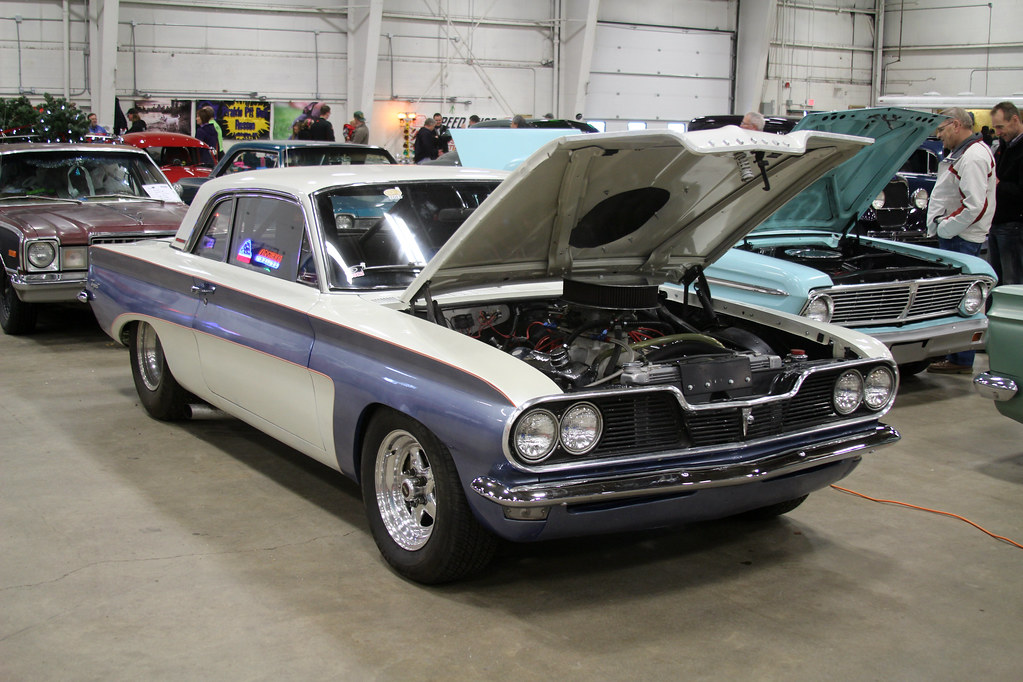
4. **The Tempest’s Evolution to the A-body Platform: A Shift to Intermediate Size**The original Pontiac Tempest, with its distinctive engineering and innovative spirit, proved to be an undeniable sales success in its initial iteration. Over its three-year production life, an impressive 375,500 examples found new homes, a testament to its appeal and cutting-edge design. It even managed to outsell its Buick Special and Oldsmobile Cutlass platform mates, highlighting Pontiac’s successful differentiation.
However, the automotive landscape was ever-changing, and by 1964, the Tempest underwent a significant transformation. It moved up into the intermediate size class, adopting the A-body platform. This shift, while aligning it with a new generation of GM vehicles, also marked the end of an era for its groundbreaking drivetrain technology.
With the move to the A-body, the Tempest shed its innovative rear transaxle and “rope drive” in favor of a more traditional front engine and transmission layout. This transition, while simplifying production and aligning it with GM’s broader strategy, meant that the unique engineering marvels of the first-generation Tempest became a historical footnote, making way for the emergence of an entirely new icon that would define intermediate performance.
Car Model Information: 1966 Pontiac Tempest Coupe
Name: Pontiac Tempest
Caption: 1967 Pontiac Tempest
Manufacturer: Pontiac (automobile)
Assembly: Pontiac Assembly,Pontiac, Michigan
Production: 1960–1970,1987–1991
Successor: Pontiac LeMans
Categories: 1960s cars, 1970s cars, 1980s cars, 1990s cars, All Wikipedia articles written in American English
Summary: The Pontiac Tempest is an automobile that was produced by Pontiac from 1960 to 1970, and again from 1987 to 1991.
The Tempest was introduced as an entry-level compact in October 1960 at the Paris Auto Show for the 1961 model year. Built on GM’s first unibody chassis, its new Y-platform was shared with the Buick Special/Skylark and Oldsmobile F-85/Cutlass.
While the Buick and Olds versions used a conventional drivetrain, the Pontiac had a unique, innovative design. The Tempest featured a front-engine/rear-transaxle layout that very nearly resulted in an ideal 50/50 weight distribution, together with independent rear suspension for nimble handling (a swing axle design similar to the Chevy Corvair). A Slant-4 engine connected to the 2-speed automatic transaxle via a flexible “rope” drive shaft. This configuration eliminated the driveshaft hump, yielding a flat floor with increased interior space. The Pontiac “Trophy-4” was also unique, created by basically halving a standard Pontiac V8 block.
Buick’s aluminum 215 V8 was also optional in 1961 and 1962, but very few Tempests were so equipped. The Tempest line offered an optional LeMans trim upgrade.
In 1964 the Tempest was redesigned as a mid-size car on the updated GM A-body platform, which used a conventional drivetrain. The base Tempest, Tempest Custom, and Lemans became separate trim packages, with an optional GTO performance option available on the LeMans for 1964 and 1965. The GTO was offered as a separate model line beginning in 1966. The Tempest name was retired after 1970, replaced by the T-37 as the base model, which in turn gave way to the LeMans name in 1972.
In Canada from 1987 to 1991, Pontiac marketed a rebadged version of the compact L-body Chevrolet Corsica under the revived Tempest name.
Get more information about: Pontiac Tempest
Buying a high-performing used car >>>
Brand: Pontiac Model: Tempest
Price: $24,800 Mileage: 23,278 mi.

5. **The Legendary Pontiac GTO (1964 onwards): The Muscle Car Icon**Indeed, the most famous A-body car to emerge in 1964 was none other than the Pontiac LeMans GTO. What began as an option package quickly evolved into its own standalone model, destined to become an indelible muscle car star. The GTO’s debut ignited a performance revolution, firmly cementing its place as an undisputed icon in American automotive history. It’s truly difficult, if not impossible, to picture the golden age of American muscle cars without those legendary three letters: G.T.O.
From its inception, the GTO captivated enthusiasts with its blend of style, power, and an undeniable aura of performance. It wasn’t just a car; it was a statement, a symbol of youthful rebellion and accessible speed. Its raw appeal resonated deeply with a generation eager for exhilarating drives and head-turning looks, quickly elevating it to fabled status.
Today, the enduring legacy of the GTO is reflected in its highly sought-after collector status. Decent examples from the mid-to-late 1960s regularly command prices of $50,000 or more, with pristine specimens soaring well over the $100,000 mark. This illustrates not only its historical significance but also the profound impact it continues to have on car culture, making it a benchmark for muscle car desirability.
Car Model Information: 1966 Pontiac GTO Coupe
Name: Pontiac GTO
Caption: 2005 Pontiac GTO
Manufacturer: Pontiac (automobile),Holden
Class: Mid-size car,Compact car,Mid-size car
Production: 1963–1974,2003–2006
Predecessor: Pontiac Tempest
Layout: Front-engine, rear-wheel-drive layout
ModelYears: 1964-1974 2004-2006
Categories: 1970s cars, 2000s cars, All articles with unsourced statements, Articles with short description, Articles with unsourced statements from October 2008
Summary: The Pontiac GTO is a front-engine, rear-drive, two-door, and four-passenger automobile manufactured and marketed by the Pontiac division of General Motors over four generations from 1963 until 1974 in the United States — with a fifth generation made by GM’s Australian subsidiary, Holden, for the 2004 through 2006 model years.
The first generation of the GTO is credited with popularizing the muscle car market segment in the 1960s. Some consider the Pontiac GTO to have started the trend with all four domestic automakers offering a variety of competing models.
For the 1964 and 1965 model years, the GTO was an optional package on the intermediate-sized Pontiac LeMans. The 1964 GTO vehicle identification number (VIN) started with 22, while the 1965 GTO VIN began with 237. The GTO was designated as a separate Pontiac model from 1966 through 1971 (VIN 242…). It became an optional package again for the 1972 and 1973 intermediate LeMans. For 1974, the GTO was an optional trim package on the compact-sized Ventura.
The GTO model was revived for the 2004 through 2006 model years as a captive import for Pontiac, a left-hand drive version of the Holden Monaro, itself a coupé variant of the Holden Commodore.
Get more information about: Pontiac GTO
Buying a high-performing used car >>>
Brand: Pontiac Model: GTO
Price: $59,991 Mileage: 4,408 mi.
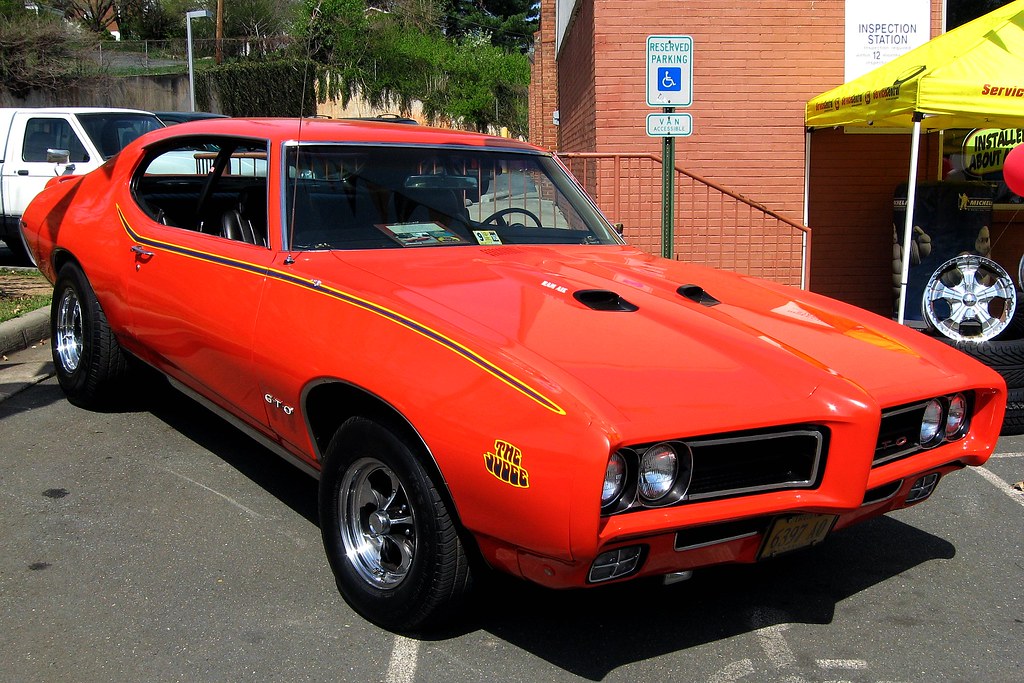
6. **The 1968 GTO and Its Revolutionary Endura Bumper: A Leap in Automotive Materials**By 1968, the Pontiac GTO had evolved into its third generation, still riding on the versatile A-body platform. This iteration showcased GM’s celebrated curvaceous styling, giving the GTO a distinctly sculpted and powerful presence. For many, this particular year represented the pinnacle of GTO design and performance, bringing significant advancements to the already impressive package.
One of the most remarkable innovations introduced with the 1968 GTO was not its formidable engine, but rather its groundbreaking front bumper, aptly named Endura. This wasn’t a conventional chrome or steel bumper; it was crafted from hard, painted foam. The Endura bumper wasn’t just aesthetically fantastic, seamlessly integrating with the body lines; it was engineered to shrug off impacts up to 4 mph without sustaining any damage.
This technological leap was a revelation. Advertising campaigns and automotive journalists of the era reveled in demonstrating its durability, famously bumping GTOs into obstacles and even hitting the Endura with a hammer to underscore its resilience. While today we take body-color plastic bumpers for granted, back then, many hailed the Endura as a glimpse into the future of automotive materials, offering both form and unprecedented function.
Car Model Information: 1966 Pontiac GTO Coupe
Name: Pontiac GTO
Caption: 2005 Pontiac GTO
Manufacturer: Pontiac (automobile),Holden
Class: Mid-size car,Compact car,Mid-size car
Production: 1963–1974,2003–2006
Predecessor: Pontiac Tempest
Layout: Front-engine, rear-wheel-drive layout
ModelYears: 1964-1974 2004-2006
Categories: 1970s cars, 2000s cars, All articles with unsourced statements, Articles with short description, Articles with unsourced statements from October 2008
Summary: The Pontiac GTO is a front-engine, rear-drive, two-door, and four-passenger automobile manufactured and marketed by the Pontiac division of General Motors over four generations from 1963 until 1974 in the United States — with a fifth generation made by GM’s Australian subsidiary, Holden, for the 2004 through 2006 model years.
The first generation of the GTO is credited with popularizing the muscle car market segment in the 1960s. Some consider the Pontiac GTO to have started the trend with all four domestic automakers offering a variety of competing models.
For the 1964 and 1965 model years, the GTO was an optional package on the intermediate-sized Pontiac LeMans. The 1964 GTO vehicle identification number (VIN) started with 22, while the 1965 GTO VIN began with 237. The GTO was designated as a separate Pontiac model from 1966 through 1971 (VIN 242…). It became an optional package again for the 1972 and 1973 intermediate LeMans. For 1974, the GTO was an optional trim package on the compact-sized Ventura.
The GTO model was revived for the 2004 through 2006 model years as a captive import for Pontiac, a left-hand drive version of the Holden Monaro, itself a coupé variant of the Holden Commodore.
Get more information about: Pontiac GTO
Buying a high-performing used car >>>
Brand: Pontiac Model: GTO
Price: $59,991 Mileage: 4,408 mi.

7. **The Judge: Pontiac’s Fastest GTO and the Stripper Performance Concept**As the 1960s drew to a close, Pontiac continued to innovate within the GTO line, introducing a package that would become legendary in its own right: The Judge. Its name, a quirky nod to the “Here Come de Judge” skit from the popular Rowan & Martin’s Laugh-In TV show, hinted at a playful yet serious approach to performance. This wasn’t merely an appearance package; it was conceived as a highly potent variant of the GTO.
Initially, The Judge was designed as a “stripper GTO,” meaning it came with fewer standard features, aiming for a more spartan, performance-focused approach. However, it compensated with a vibrant color palette and distinctive, wicked graphics that immediately set it apart. This concept allowed Pontiac to focus resources on what truly mattered for speed, resulting in a surprising outcome.
In this stripped-down, yet performance-optimized configuration, Pontiac arguably created its fastest GTO. When equipped similarly, the 1970 model, particularly with a 400 Ram Air III, was even noted to out-clock the standard GTO and the Trans Am of its time. Despite its fury and style, the GTO line, including The Judge, saw 72,287 units sold in 1969, with 6,833 being The Judge, though it eventually faced stiff competition from rivals like the Chevrolet Chevelle SS396 and the Plymouth Road Runner.
Car Model Information: 1966 Pontiac GTO Coupe
Name: Pontiac GTO
Caption: 2005 Pontiac GTO
Manufacturer: Pontiac (automobile),Holden
Class: Mid-size car,Compact car,Mid-size car
Production: 1963–1974,2003–2006
Predecessor: Pontiac Tempest
Layout: Front-engine, rear-wheel-drive layout
ModelYears: 1964-1974 2004-2006
Categories: 1970s cars, 2000s cars, All articles with unsourced statements, Articles with short description, Articles with unsourced statements from October 2008
Summary: The Pontiac GTO is a front-engine, rear-drive, two-door, and four-passenger automobile manufactured and marketed by the Pontiac division of General Motors over four generations from 1963 until 1974 in the United States — with a fifth generation made by GM’s Australian subsidiary, Holden, for the 2004 through 2006 model years.
The first generation of the GTO is credited with popularizing the muscle car market segment in the 1960s. Some consider the Pontiac GTO to have started the trend with all four domestic automakers offering a variety of competing models.
For the 1964 and 1965 model years, the GTO was an optional package on the intermediate-sized Pontiac LeMans. The 1964 GTO vehicle identification number (VIN) started with 22, while the 1965 GTO VIN began with 237. The GTO was designated as a separate Pontiac model from 1966 through 1971 (VIN 242…). It became an optional package again for the 1972 and 1973 intermediate LeMans. For 1974, the GTO was an optional trim package on the compact-sized Ventura.
The GTO model was revived for the 2004 through 2006 model years as a captive import for Pontiac, a left-hand drive version of the Holden Monaro, itself a coupé variant of the Holden Commodore.
Get more information about: Pontiac GTO
Buying a high-performing used car >>>
Brand: Pontiac Model: GTO
Price: $59,991 Mileage: 4,408 mi.
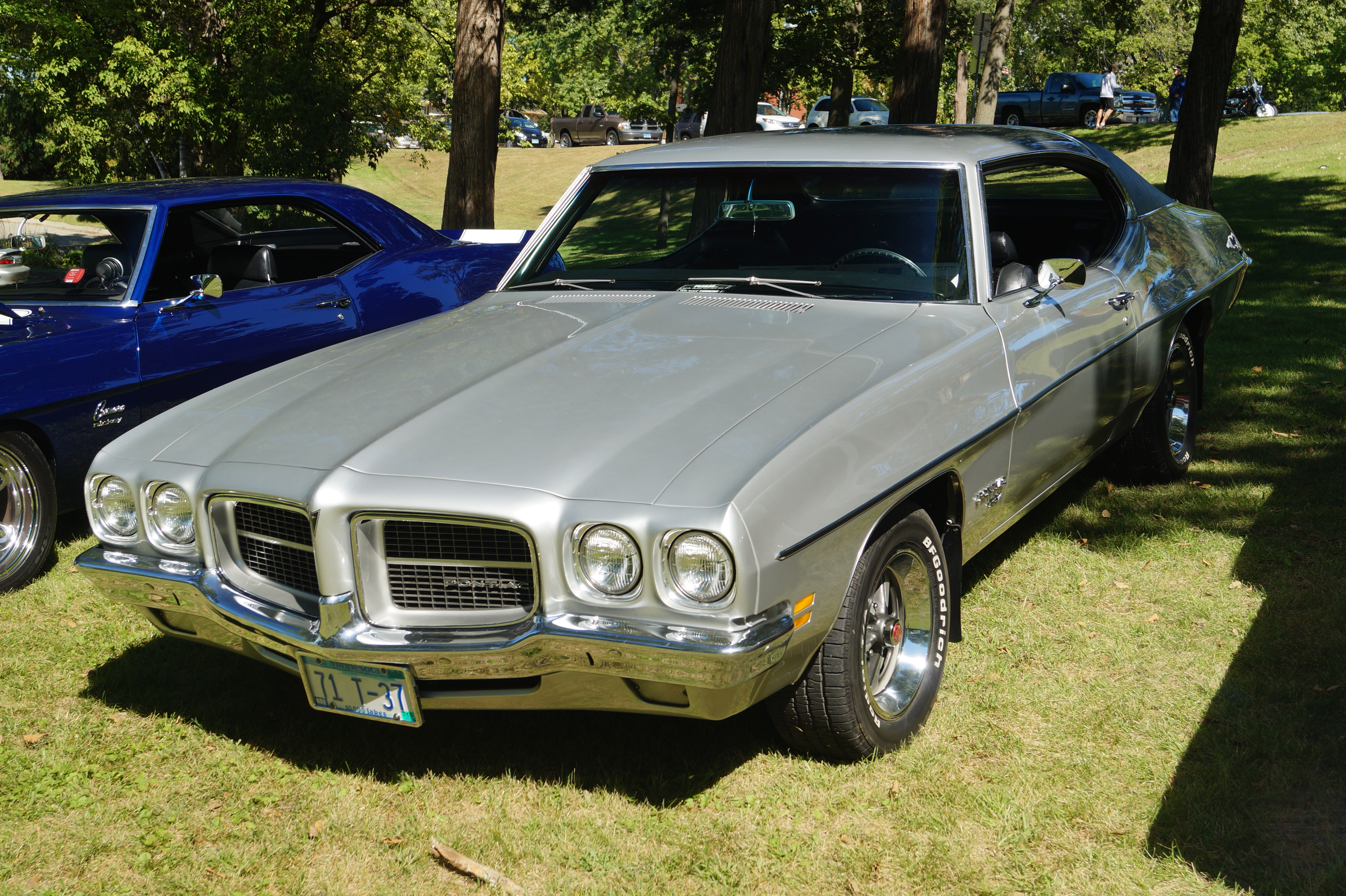
8. **The Pontiac T-37 and GT-37: The “Stripped GTO” Concept**In 1970, a fascinating shift occurred within Pontiac’s model hierarchy, driven by a desire to capture a broader market segment. Recognizing that not everyone could afford the fabled GTO or its associated insurance premiums, Pontiac aimed to offer the cheapest coupe within General Motors. This ambition led to the introduction of the T-37, essentially a Tempest stripped of non-essential standard features to achieve a rock-bottom price point. Its name, though perhaps less glamorous than GTO, was purely functional: “T” for Tempest and “37” as Pontiac’s internal code for a hardtop coupe, a pragmatic approach to performance accessibility.
What made the T-37 truly remarkable was its clandestine potential. Despite its low-buck classification, customers could equip it with virtually any engine from Pontiac’s formidable lineup. Imagine a factory ‘sleeper’ that, on the surface, appeared unassuming with its cloth seats and rubber floor mats, yet secretly housed a monstrous 455 cubic inch High Output V8, capable of generating 335 gross horsepower. Paired with a Muncie four-speed manual and aggressive 4:33 gearing, this seemingly humble car could transform into a formidable street machine, ready to surprise unsuspecting rivals.
Building upon the T-37’s foundation, Pontiac unveiled the GT-37, a version that embraced its performance aspirations more openly. This model shared the T-37’s potent engine options but distinguished itself by incorporating stylistic and performance “goodies” borrowed directly from the GTO. This strategic move was designed to appeal to younger demographics and those on a tighter budget, offering much of the GTO’s allure without the prohibitive price tag or the watchful eye of insurance providers. The GT-37 truly embodied the spirit of affordable, accessible speed, a clever blend of economy and muscle.
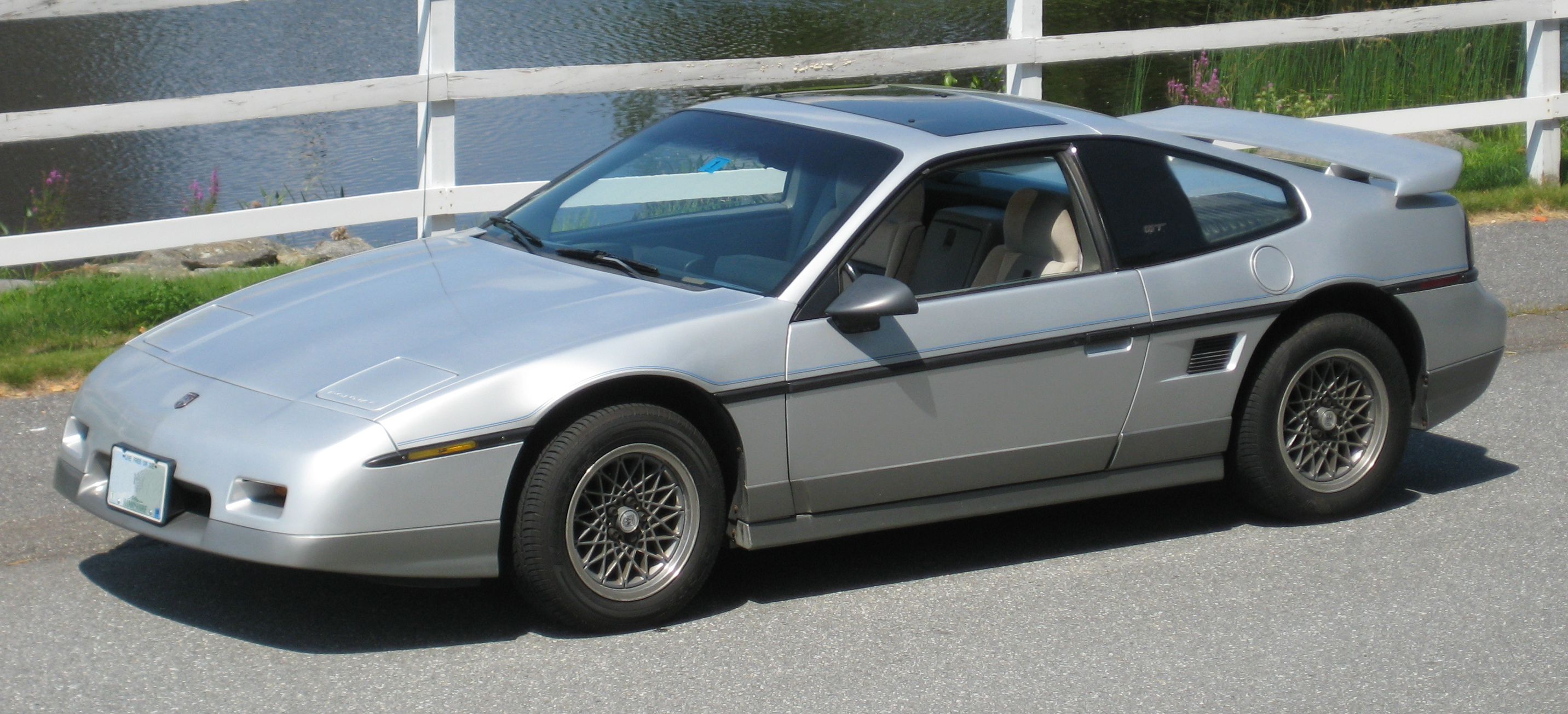
9. **The GT-37’s Performance Features and Market Positioning**The standard GT-37 was far from a slouch, coming equipped with a respectable 350 cubic inch V8 engine that delivered 255 horsepower and 355 lb-ft of torque. However, its true charm lay in the details—those performance cues that hinted at its GTO lineage. Buyers opting for the GT-37 package received the GTO’s distinctive exhaust system, a precise Muncie three-speed manual transmission complete with a Hurst shifter for satisfying gear changes, and stylish Rally II wheels adorned with white letter tires, all contributing to its aggressive stance.
Further enhancing its muscle car credentials, the GT-37 package included functional hood locking pins and a slick graphics package that proudly announced its performance intentions. When comparing prices, the GT-37 presented an undeniable value proposition: a GTO hardtop in 1970 cost $3,267, plus an additional $337.02 for the coveted Judge package. In stark contrast, a T-37 could be had for roughly $2,600 and change, with the GT-37 flavor adding just $198. Period tests confirmed that the GT-37 was indeed a quick car, proving that its aggressive looks were backed up by genuine performance capabilities on the road.
While the interior certainly reflected its “stripper” ethos—featuring Morrokide-clad bench seats, deliberately deleted sound deadening to save costs, and practical rubber floor mats—Pontiac didn’t entirely forego customization. Options such as a dash-mounted tachometer, a choice of three steering wheels, and, critically, the ability to upgrade to larger V8s, including the 400 cubic inch or the potent H.O. 455, meant buyers could still tailor their GT-37. This allowed for a discount GTO experience, provided one was willing to embrace a more spartan cabin and a bit more road noise, truly embodying the spirit of “cheap speed” without compromise on power. The GT-37’s true genius, however, lay in its ability to circumvent high insurance costs for younger drivers, effectively playing the role of a tamer car in the eyes of insurance companies while delivering genuine muscle car thrills.
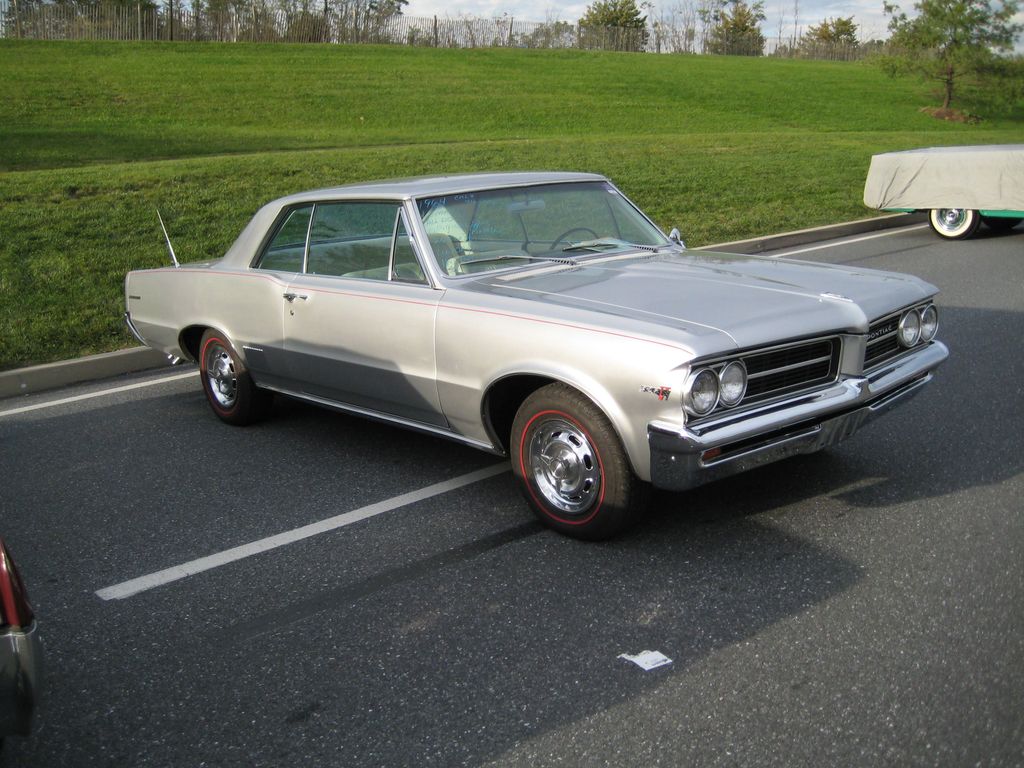
10. **The Holy Grail of the GT-37 Line: The 1971 LS5 455 H.O.**While the GT-37 was a clever market solution, its overall production numbers weren’t astronomically low, making it “not really rare” in the grand scheme of things, with Pontiac building 45,000 T-37s in 1970 and 5,802 GT-37s in 1971. The majority of these 1971 GT-37s, specifically 5,015 units, came equipped with the base 350 V8 engine. However, within this accessible lineup lay a true automotive holy grail, a variant so scarce it continues to captivate collectors and enthusiasts to this day. This ultimate prize was the 1971 GT-37 fitted with the formidable LS5 455 H.O. engine.
The production figures for this particular iteration are staggering in their exclusivity. Pontiac manufactured a mere 54 examples of the 1971 GT-37 with the LS5 455 H.O. engine. Furthermore, an even more astounding detail reveals that a scant 11 of these units were “post coupes,” making them exceptionally rare finds. This extreme scarcity, coupled with the immense power under the hood, transforms these specific GT-37s into legendary artifacts of the muscle car era, embodying the pinnacle of Pontiac’s “sleeper” philosophy.
The performance capabilities of these ultra-rare GT-37s were nothing short of astonishing. As noted by enthusiasts, Pontiac guru Dan Jensen famously ran his example in the low 11s and 12s at Pure Stock Drags and F.A.S.T. events, a remarkable feat achieved even on bias-ply tires. What makes this achievement even more compelling is the car’s unassuming exterior. From a casual glance, it genuinely appears “just like the two-door grocery getter that Grandma bought for herself after Grandpa passed away and all the kids were grown,” perfectly illustrating the ideal intersection between a discreet “sleeper” and a revered “grail” in the automotive world.

11. **The End of the GT-37 Era and Its Enduring Value**Unfortunately, Pontiac’s innovative experiment with the T-37 and GT-37 was a relatively short-lived one, concluding its run when the T-37 was replaced by the base LeMans pillared coupe in 1972. Despite its brief tenure, the GT-37 left an indelible mark as a testament to Pontiac’s commitment to offering accessible performance and clever market positioning. Its rarity today means that finding one is a genuine challenge, a true treasure hunt for the dedicated enthusiast, contrasting sharply with the more numerous examples of its GTO sibling.
For those patient enough to seek one out, the reward is substantial. While finding a GT-37 may require considerable effort and time, their market value offers a compelling alternative to the often-exorbitant prices of iconic GTOs. Recent sales data suggests that a GT-37 can typically be acquired for a price ranging from approximately $25,000 to $40,000, give or take, making it a “far cooler market” compared to the much richer GTO and The Judge. This affordability, relative to its legendary contemporaries, reinforces its status as an excellent value for collectors seeking a unique piece of muscle car history.
Reflecting on the GT-37’s legacy evokes a sense of nostalgia for Pontiac’s bold approach. The brand’s willingness not only to offer cheap speed but to do so in a way that cleverly sidestepped conventional insurance costs was, as one enthusiast put it, “like a middle finger to insurance costs.” This audacious spirit, delivering high-octane thrills in an unassuming package, is precisely what makes the GT-37 so captivating and why many lament the absence of such brazen innovation in today’s automotive landscape. It’s a powerful reminder of an era when ingenuity and a deep understanding of driver desires led to truly exceptional, albeit sometimes overlooked, machines.
Read more about: Unearthing Automotive Gold: 10 Jaw-Dropping ’70s Muscle Cars You Can Still Own for a Steal

12. **Beyond Pontiac: The Rarity of Other Golden Era Muscle Cars**While Pontiac’s GT-37 represents a remarkable example of accessible performance and strategic engineering, the broader landscape of classic car culture is equally captivated by another class of vehicles: the incredibly rare muscle cars produced in astonishingly low numbers during Detroit’s golden era. It’s no secret that car fans are mesmerized by limited-edition supercars, but many overlook the fact that the muscle car heyday produced numerous machines with even fewer units than today’s multi-million-dollar exotics. These forgotten, yet powerful, machines are the true gems for discerning collectors and enthusiasts.
During this period, manufacturers often offered high-performance options that, while potent, were also expensive or specialized, leading to limited uptake. As a result, many of the cars that now command the highest prices and the most fervent searches are those that were considered niche or extravagant at the time. This phenomenon wasn’t confined to a single brand; while certain manufacturers like Chrysler’s Mopar divisions are particularly renowned for their exclusive performance offerings, the spirit of low-volume, high-impact production permeated the industry.
Indeed, as you delve deeper into this world, you’ll frequently encounter Hemi-powered models among the rarest listings. The Hemi engine, available across various Plymouth and Dodge models, was a potent, sought-after, and costly option that naturally resulted in lower production figures compared to standard powertrains. However, this exploration of scarcity isn’t limited exclusively to Mopar. The realm of rare muscle cars also includes exceptional examples from Ford and Chevrolet, showcasing that the pursuit of ultimate power and exclusivity was a common thread across all the major American manufacturers, creating a diverse tapestry of automotive legends.

13. **1970 Dodge Challenger R/T Hemi Convertible: A Mopar Marvel**Among the pantheon of incredibly rare muscle cars, the 1970 Dodge Challenger R/T Hemi Convertible stands as a pinnacle of Mopar exclusivity and raw power. While Plymouth had introduced its first pony car, the Barracuda, a couple of weeks before the iconic Ford Mustang, Dodge’s entry into this competitive segment didn’t arrive until 1970. When the Challenger finally made its debut, it immediately presented buyers with the full, unbridled firepower of Mopar’s engine lineup, offering everything from a powerful 383 V8 and a big 440 to the legendary 426 Hemi.
The Challenger was conceived as a true muscle car, designed to dominate the streets and the drag strip. Consequently, the vast majority of Challengers sold were hardtop coupes, reflecting the market’s preference for performance-oriented closed-body vehicles. However, Dodge also offered a convertible variant, which, when combined with the most potent engine option, created an almost mythical rarity. This open-air version of the Challenger was already less common, but the addition of the Hemi engine pushed it into the realm of extreme scarcity.
In the entire production year of 1970, Dodge manufactured a staggeringly low number of Hemi Challenger convertibles—only nine examples ever rolled off the assembly line. This minuscule production figure, coupled with the fearsome power of the Hemi engine, firmly cemented this model’s status as one of the rarest, as well as the most powerful, muscle car convertibles ever built during that golden era of American automotive prowess. Each of these nine cars represents a unique piece of history, an ultimate expression of Mopar’s commitment to performance and exclusivity.
Car Model Information: 2023 Dodge Challenger R/T Scat Pack
Name: Dodge Challenger
Production: 1969–1974,1977–1983,2008–2023
ModelYears: 1970–1974,1978–1983,2008–2023
Caption: 2015 Dodge Challenger SRT Hellcat
Manufacturer: Dodge
Categories: 1970s cars, 1980s cars, 2000s cars, 2010s cars, 2020s cars
Summary: The Dodge Challenger is the name of three generations of automobiles produced by the American automobile manufacturer Dodge. However, the first use of the Challenger name by Dodge dates back to 1959 for marketing a “value version” of the full-sized Coronet Silver Challenger.
From model years 1970 to 1974, the first-generation Dodge Challenger pony car was built using the Chrysler E platform in hardtop and convertible body styles sharing significant components with the Plymouth Barracuda.
The second generation, from model years 1978 to 1983, was a rebadged Mitsubishi Galant Lambda / Sapporo, a coupe version of an economical compact car.
The third and current generation is a full-size muscle car that was introduced in early 2008 initially as a rival to the evolved fifth generation Ford Mustang and the fifth generation Chevrolet Camaro.
In November 2021, Stellantis announced that the 2023 model year would be the final model year for both the LD Dodge Charger and LA Dodge Challenger, as the company will focus its plans on electric vehicles rather than fossil fuel-powered vehicles, due to tougher emissions standards required by the Environmental Protection Agency for the 2023 model year. Challenger production ended on December 22, 2023, and the Brampton, Ontario, assembly plant will be re-tooled to assemble an electrified successor.
Get more information about: Dodge Challenger
Buying a high-performing used car >>>
Brand: Dodge Model: Challenger
Price: $41,566 Mileage: 27,425 mi.
Read more about: Unearthing Hidden Gems: 10 Underrated Classic Muscle Cars Skyrocketing in Value for Savvy Collectors

14. **The Enduring Allure of Single-Digit Production Muscle Cars**The story of cars like the 1970 Dodge Challenger R/T Hemi Convertible perfectly encapsulates the enduring allure of single-digit production muscle cars. These aren’t just vehicles; they are rolling legends, born from a unique confluence of high-performance engineering, niche market demand, and often, high costs that limited their initial sales. The decision to equip a convertible, already a less common body style for muscle cars, with an expensive and powerful engine like the Hemi, was a recipe for extreme rarity from the outset, inadvertently creating future collector’s dreams.
What makes these machines so profoundly desirable today is not just their horsepower or their iconic designs, but the sheer difficulty of finding them. Unlike mass-produced vehicles, each of these ultra-rare muscle cars has a distinct story, often a known provenance, and commands a level of historical reverence that few other automobiles can match. They represent the ultimate expression of automotive ambition from an era when manufacturers were pushing the boundaries of power, sometimes even in defiance of changing regulations and public sentiment.
From the Pontiac GT-37 that cleverly masked its performance potential, to the outright thunder of a Hemi convertible, these vehicles are more than just metal and rubber. They are cultural touchstones, symbols of an era of unbridled automotive freedom and engineering prowess. Their scarcity, combined with their incredible capabilities, ensures their place as true “holy grails” for enthusiasts and collectors, a testament to the fact that sometimes, the most legendary cars are those that were hardest to come by, then and now. Their value lies not just in their price tag, but in their ability to transport us back to a time when Detroit ruled the road with unapologetic power and style.
Car Model Information: 2023 Dodge Challenger R/T Scat Pack
Name: Dodge Challenger
Production: 1969–1974,1977–1983,2008–2023
ModelYears: 1970–1974,1978–1983,2008–2023
Caption: 2015 Dodge Challenger SRT Hellcat
Manufacturer: Dodge
Categories: 1970s cars, 1980s cars, 2000s cars, 2010s cars, 2020s cars
Summary: The Dodge Challenger is the name of three generations of automobiles produced by the American automobile manufacturer Dodge. However, the first use of the Challenger name by Dodge dates back to 1959 for marketing a “value version” of the full-sized Coronet Silver Challenger.
From model years 1970 to 1974, the first-generation Dodge Challenger pony car was built using the Chrysler E platform in hardtop and convertible body styles sharing significant components with the Plymouth Barracuda.
The second generation, from model years 1978 to 1983, was a rebadged Mitsubishi Galant Lambda / Sapporo, a coupe version of an economical compact car.
The third and current generation is a full-size muscle car that was introduced in early 2008 initially as a rival to the evolved fifth generation Ford Mustang and the fifth generation Chevrolet Camaro.
In November 2021, Stellantis announced that the 2023 model year would be the final model year for both the LD Dodge Charger and LA Dodge Challenger, as the company will focus its plans on electric vehicles rather than fossil fuel-powered vehicles, due to tougher emissions standards required by the Environmental Protection Agency for the 2023 model year. Challenger production ended on December 22, 2023, and the Brampton, Ontario, assembly plant will be re-tooled to assemble an electrified successor.
Get more information about: Dodge Challenger
Buying a high-performing used car >>>
Brand: Dodge Model: Challenger
Price: $41,566 Mileage: 27,425 mi.
Read more about: Untamed Beasts: Unmasking the Most Dangerously Potent Muscle Cars Ever Unleashed on Public Roads
As we journey through these incredible machines, from Pontiac’s clever “stripper GTOs” to Mopar’s ultra-exclusive Hemi convertibles, it becomes clear that the golden age of muscle cars was about far more than just raw power. It was an era of innovation, strategic market plays, and a genuine passion for engineering excellence that continues to resonate with enthusiasts today. Each of these cars, whether a cunning sleeper or a bold limited edition, offers a unique window into the spirit of American automotive history, proving that some of the most cherished “holy grails” are often found in the most unexpected, and rarest, of places.


